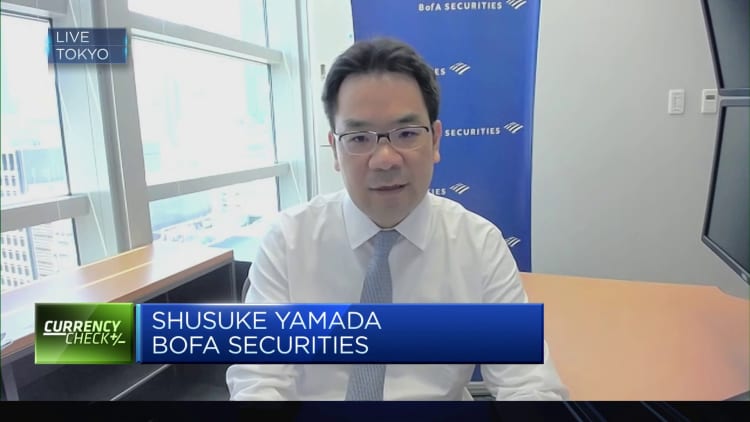
The Bank of Japan has pushed back on speculation its recent policy adjustment marked the start of a tightening cycle.
Deputy Governor Shinichi Ichida on Wednesday reiterated the central bank's flexible threshold for tolerance on long-term bond yields is merely a necessary modification to sustain its ultra-easy monetary policy position.
On Friday, the BOJ unexpectedly loosened its yield curve control, a move some market watchers said mark the start of the end of the Japanese central bank's ultra-easy monetary policy position. The so-called YCC is a policy tool used to target longer term interest rates.
Needless to say, we do not have an exit from monetary easing in mind.Shinichi IchidaDeputy governor, Bank of Japan
"The Bank's decision to conduct yield curve control with greater flexibility aims at patiently continuing with monetary easing while nimbly responding to both upside and downside risks under extremely high uncertainties for economic activity and prices at home and abroad," Ichida said in prepared comments for a public address in Chiba prefecture.
"Needless to say, we do not have an exit from monetary easing in mind," he added.
Speculation about such an exit emerged after the BOJ's surprise decision to offer to "flexibly" purchase 10-year Japanese government bonds at 1% yield through fixed-rate operations. The central bank, however, stuck to its existing plan to allow yields to fluctuate in the range of around plus and minus 0.5 percentage points from its 0% target level.

On Wednesday, Japan's 10-year bond yield hit yet another fresh nine-year high at about 0.63% after the BOJ left its purchase offer amounts unchanged from last month in its fixed-rate operations.
The BOJ's yield curve control is part of its ultra-easy monetary policy, which also includes keeping short-term interest rates at -0.1%. It is aimed at reflating growth in the world's third-largest economy and sustainably achieve its 2% inflation target after years of deflation.
On Wednesday, Ichida said there is "still a long way to go" before Japan's central bank would even consider raising short-term interest rates from its current -0.1% to 0%.
Every policy has its positive effects, but it also always comes with costs. There is no free lunch for any policy.Shinichi IchidaDeputy governor, Bank of Japan
Ichida said the BOJ needs to maintain ultra-easy monetary policy and keep interest rates low to "carefully nurture" nascent signs of change seen in firms' wage- and price-setting behavior.
He added it was difficult to change the cautious attitudes "so deeply entrenched" among firms even after Japan's economy achieved a situation where it was no longer in deflation.
The central bank has been under pressure to tighten its monetary policy since inflation has consistently exceeded its 2% target for 15 straight months, while wages are finally starting to increase after years of stagnation.

This position pits the BOJ squarely against the global wave of tightening monetary policy in the last 12 months, as inflation spiked following the resumption of economic activity as the world emerged from the pandemic.
"Every policy has its positive effects, but it also always comes with costs. There is no free lunch for any policy," Ichida said. "When inflation expectations rise, not only the easing effects but also the side effects strengthen. It is necessary to strike an optimum balance between the two."


